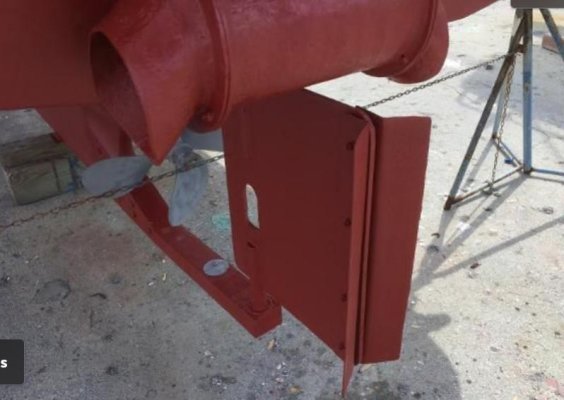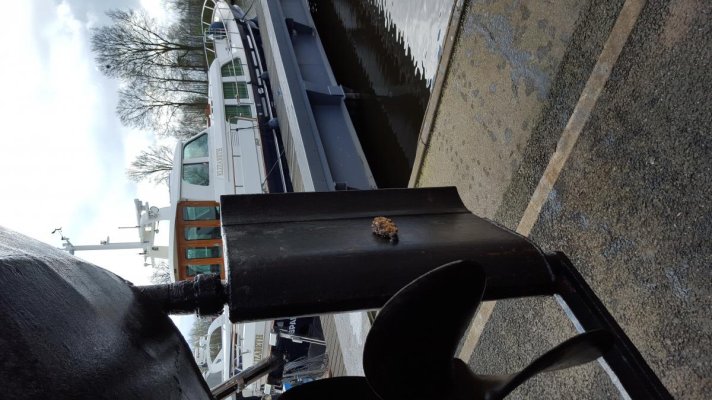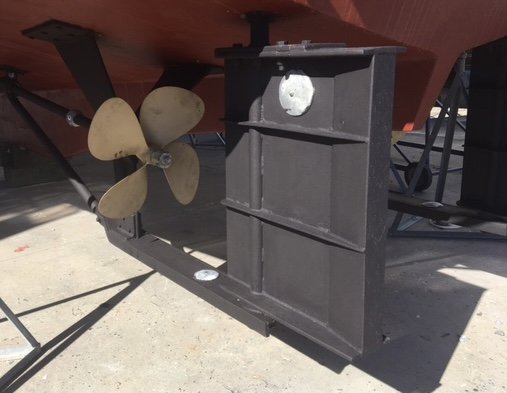Another factor to consider with rudder design and performance is vibration. I recall listening to a naval architect years ago talking about rudder designs and failures and some testing done at the David Taylor Labs with NAVSEA ( Naval Sea Systems Command ). Anyway I’m not smart enough to fathom all that was said, too much math, but rudders can vibrate in prop wash and cause wear problems in the rudder port, tillers arms, bushings and hydraulic seals. The navy gets all tweaked out shape when stuff like this occurs since it alters a ships acoustic signature, think subs, mines surveillance buoys. The speakers related how a bit of trailing edge flare can help steady a rudder and reduce wear. The USN doesn’t use skeg hung rudders on their surface combatant ships but some of their fleet does. Nor do they flare their balanced HS rudders that I know of — go figure ?
Many times while I was conducting sea trials laying in the lazarette I’ve felt rudder stock vibration some really strong others minimal. Those that trembled would shake the tiller arm, pins, and the hydraulic steering ram. It doesn’t take much imagination to figure abnormal wear at these fittings not to mention a skeg base bearing. Throw in a wheel that’s bent or a bit out of track and the prop wash could really excite a rudder and cost you down the road. Bent wheels will hammer a stern and strut bearings beyond tolerance in short order so you can expect similar but slower wear with a shakey rudder. So I’m a fan of 3-5° trailing edge flare and a hydrodynamic rudder blade to keep thing running smooth. A little bit of flare creates enough pressure to help stabilize most larger rudders
Rick



